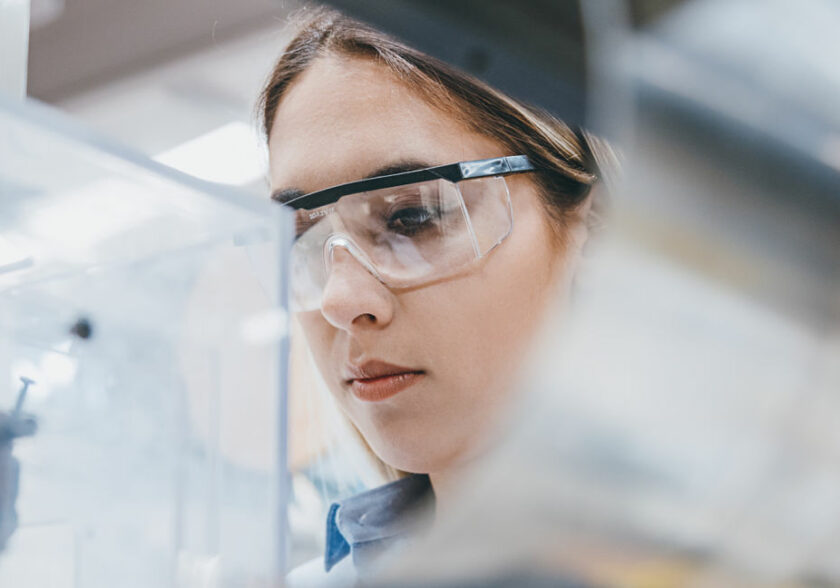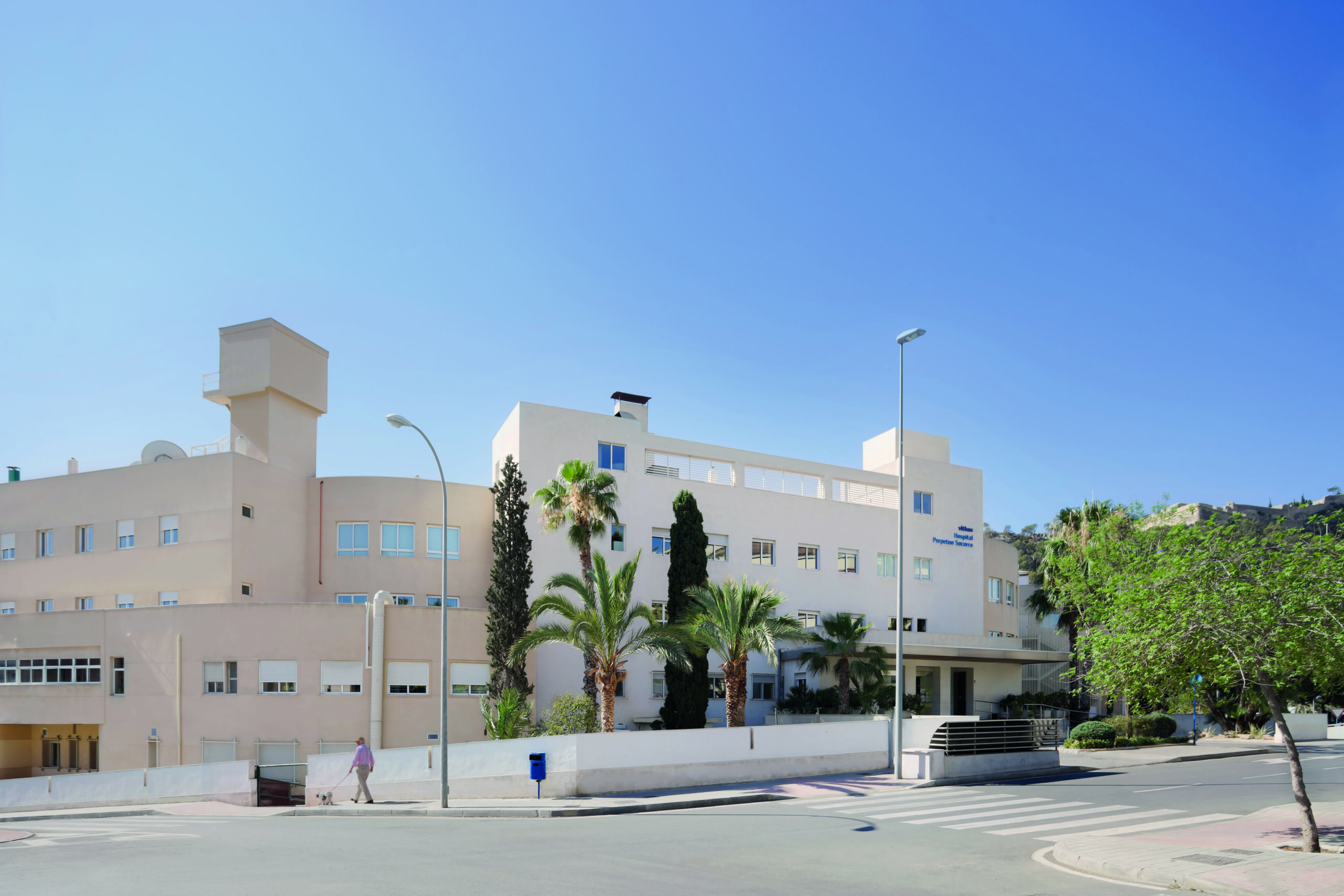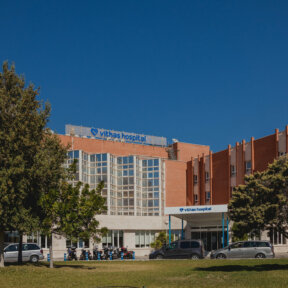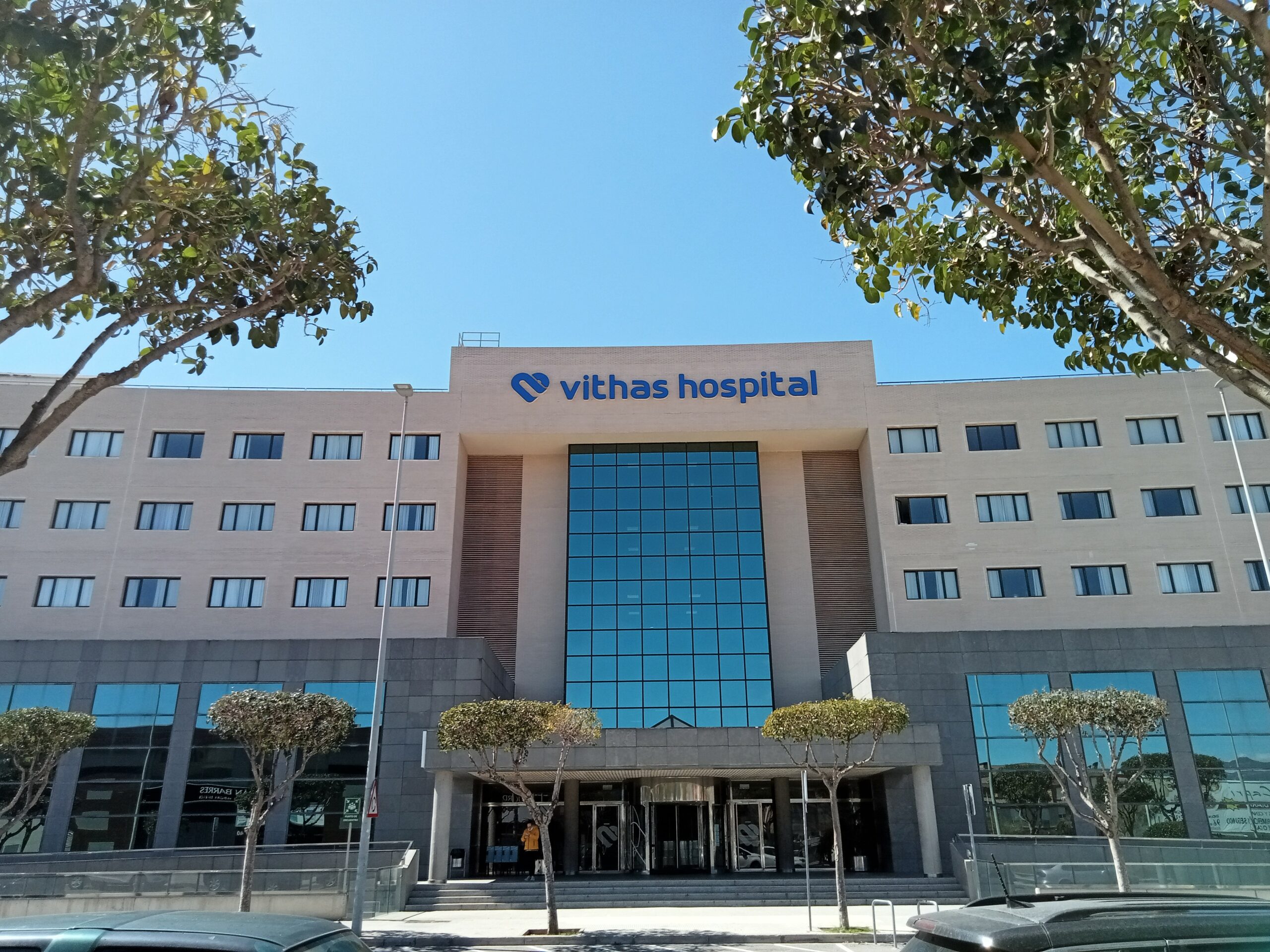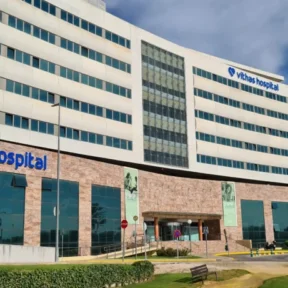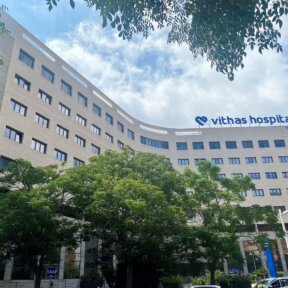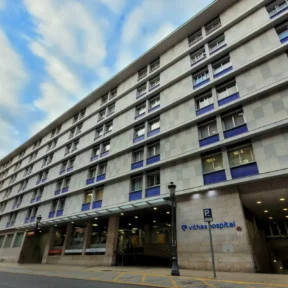What is pathological anatomy?
Pathological anatomy is the medical speciality that deals with the assessment of biopsies, surgical resections and cytologies using different technologies with the aim of achieving an accurate and personalised diagnosis, providing prognostic and therapeutic information. Pathological anatomy is a key speciality in cancer diagnosis.
Which patients is it for?
Pathological anatomy is aimed at all types of patients who require a diagnosis and/or assessment of prognostic or predictive treatment response parameters based on tissue sampling or cytology.
Main conditions and diseases
- Diagnosis of pathology through biopsies and surgical specimens
- Diagnosis and typing of breast cancer and precursor pathology Intraoperative study of breast lesions and sentinel node study Biomarker study (oestradiol, progesterone, Her2, Ki67 receptors)
- Thoracic-pulmonary pathology Bronchopulmonary, pleural and mediastinal cancer Interstitial pulmonary pathology
- Head and neck pathology (Carcinoma of the larynx and precursor lesions, salivary gland, oropharyngeal pathology)
- Endocrine pathology: thyroid cancer, parathyroid pathology, adrenal, pituitary
- Gynaecological pathology: precursor lesions and cervical cancer, cytological diagnosis and molecular tests for HPV (human papillomavirus) infection Lesions of the endometrium, myometrium, ovaries and tubes Study of the placenta and perinatal autopsy
- Pathology of the gastrointestinal tract, pancreas, bile duct and liver Surgical pathology with special focus on the diagnosis and pathological staging of gastrointestinal tract cancer
- Renal and urological pathology: renal biopsy, diagnosis and typing of bladder, prostate, urinary tract and renal cancer Testicular neoplasms Testicular biopsy on infertility
- Dermatopathology: inflammatory and neoplastic pathology Skin cancer, intraoperative study using Mohs’ surgery
- Haematopathology: inflammatory and neophasic lymphoid pathology (nodal biopsy) and bone marrow biopsy
- Neuropathology Diagnosis and typing of brain cancer
- Pathology of soft tissue, joints and bone
Main diagnostic resources and technology
- Reception and macroscopic processing with carving table equipped with Bio-Optica gas extraction Cruma storage cabinet with carbon filters
- Automated biopsy processing
- HistoCore Arcadia C paraffin block preparation unit
- Microtomy of paraffin-embedded tissue
- Frozen tissue microtomy for intraoperative studies or those requiring tissue not fixed or embedded in paraffin
- Cytocentrifuge, centrifuge and cytological processing
- Fine needle aspiration puncture (FNAP) of superficial and deep lesions
- Clinical cytopathology (leaks, urine, CSF)
- Cervico-vaginal cytology and HPV
- Enzymatic immunohistochemistry
- Direct immunofluorescence (nephropathology, dermatopathology)
- Histochemical techniques
- In situ hybridisation techniques
- Immunohistochemistry of therapeutic targets applied to oncology diagnosis
- Photon microscopy
- Study of therapeutic targets (EGFR, Her-2, c-Kit, etc.), DNA repair proteins
Main procedures and techniques
- Diagnostic techniques in gastrointestinal pathology Histochemical techniques for liver biopsy assessment, Helicobacter identification, microsatellite instability (study of immunohistochemical expression of repair proteins) in colorectal cancer, immunohistochemistry for stroma tumours
- Diagnostic techniques in gynaecological pathology Study with p16, Ki67 markers, hormone receptors, microsatellite instability (study of restorative protein expression) Assessment of chronic endometriosis with CD138 Diagnosis and typing of HPV, with conventional cytology and by molecular techniques
- Diagnostic techniques in dermatopathology Markers of melanoma and other skin tumours Direct immunofluorescence with IgG, IgA, IgM, C1q, C3, fibrinogen Mohs’ surgery
- Diagnostic techniques in thoraco-pulmonary pathology Biopsy and bronchopulmonary cytology (endoscopic, transthoracic puncture, surgical pathology) Pulmonary biopsy for the study of interstitial disease Immunohistochemistry applied to oncology diagnosis
- Diagnostic techniques in haematopathology Lymph node and bone marrow biopsies Immunohistochemical markers for the classification of lymphoproliferative processes
- Diagnostic techniques in nephropathology and uropathology Kidney biopsy with direct immunofluorescence Biomolecular profile of urothelial carcinoma Coarse needle biopsy of the prostate with application of immunohistochemical markers for differential diagnosis Testicular biopsy to assess infertility
- Diagnostic techniques in ENT pathology Immunohistochemical assessment of head and neck cancer Intraoperative
- Diagnostic techniques in endocrine pathology: Immunohistochemical assessment of cell proliferation, endocrine differentiation and intraoperative study (thyroid, parathyroid) Thyroid FNAP
- Diagnostic techniques in bone and soft tissue pathology Diagnosis, grading and immunohistochemical evaluation
- Diagnostic techniques in neuropathology Application of immunohistochemistry for typing CNS neoplasms Intraoperative study
Areas of specialisation
- Breast, pulmonary, digestive and endocrine pathology
- Gynaecological, bone and soft tissue pathology
- Cytopathology and immunohistochemistry
- Head and neck, uropathology, haematopathology
Special services
Pathological anatomy diagnosis is perfectly integrated into clinical practice, within the concept of personalised diagnosis and the multidisciplinary process that requires diagnosis, treatment and follow-up of the patient.
We have specialists in pathological anatomy with a long professional and academic career, all leaders in their areas of expertise and with national and international renown, to ensure a high-quality, accurate diagnosis — the final product of pathological anatomy — accompanied by all the information necessary to establish a prognosis and the most appropriate treatment.
For the technical procedures we have superior technicians in pathological anatomy (TSAPs, for the Spanish initials), who are highly qualified and undergo continuous internal and external training.
Our pathologists have full and immediate access to all resources. The complexity of the pathology, and especially that related to malignancies, requires a direct and continuous interrelationship with surgeons, gynaecologists, gastroenterologists, urologists, dermatologists, radiologists, medical oncologists and radiotherapists. The pathologist is a mandatory figure in all interdisciplinary boards.
The Pathological Anatomy Service incorporates all the latest techniques that the new therapeutic approaches require in a bid for continuous improvement.
Why come to the clinic?
The Pathological Anatomy Service integrates diagnostic excellence with the patient as its raison d’être. This people-centred approach guides each of our procedures, allowing us to maintain a continuous exchange of information with the other medical professionals involved in patient care.
Our response times range between 24 hours or a week (depending on the test) and allow us to start a timely treatment with the shortest waiting time, contributing to psychological well-being in situations of uncertainty.
Others
One of the fields of development in 21st century medicine is the diagnosis and treatment of cancer. Pathologists play a fundamental role in the process since they are responsible for its morphological diagnosis, classification, pathological staging (in surgical resections) and assessment of markers, with prognostic and therapeutic implications.
This information, increasingly extensive and complete, requires continuous integration within multidisciplinary teams that every hospital must develop and maintain. Pathological anatomy is not a succession of procedures or techniques, but a process of integration, interpretation and transmission in a clear and precise way.
FAQs
What is pathological anatomy and what is it for?
Pathological anatomy is a diagnostic medical speciality that is the “gold standard” in the diagnosis of numerous pathologies, such as cancer. Pathologists are specialist doctors trained with the MIR system after a training period of 4 years (the draft to extend this to 5 years is pending approval by the Ministry of Health), in addition to their 6 years of medical training. However, acquiring diagnostic experience is an ongoing process that takes years. Treating cancer requires an anatomopathological diagnosis that also provides crucial information for the patient to receive adequate treatment.
Is pathological anatomy a speciality where tests are done?
The final product of pathological anatomy is diagnosis and not an analytical result. To arrive at this diagnosis, pathologists use a set of laboratory procedures that they themselves indicate, interpret and integrate. In this way, pathologists have a specific anatomopathological technification laboratory that provides them with the necessary techniques to issue the diagnosis.
What role does it play in cancer diagnosis?
Pathologists are responsible for the morphological diagnosis of cancer, its classification and assessment of markers that are useful to guide the patient’s treatment. Cancer treatment cannot be addressed without an accurate pathological diagnosis.
What is the difference between a pathologist and a senior technician in pathological anatomy?
The tissue and cellular samples sent to the service must be properly processed in the pathological anatomy laboratory, and this job is carried out by the superior pathological anatomy technicians, with adequate supervision. Pathologists (physicians specialising in pathological anatomy) are responsible for the diagnosis, which they achieve through the macroscopic and microscopic assessment of the processed samples and the different techniques indicated, issuing a written and detailed report with the diagnosis and all the parameters with clinical utility.
What happens to the pathological anatomy samples?
Each sample received is studied in its general aspect (macroscopic), detailing its characteristics (measurements, weight, relevant findings). Subsequently, the pathologist selects the most relevant parts of the sample or surgical specimen, often selecting the entire sample.
At this point, the technicians initiate different processes and techniques to transform the initial sample into a thin cut of tissue attached to a glass sheet, which can be viewed under a microscope.
On this processed material it is possible to extract DNA and RNA for molecular studies and also to study the expression of specific proteins indicating a disease, as well as the patient’s probability of responding to a specific treatment.
This is the integral concept of personalised medicine, which is based on an accurate diagnosis that will allow for a personal treatment. The paraffin samples are stored and kept for at least 15 years.
How is the confidentiality of the results ensured?
Each sample received at the service is identified by a unique code that contains the details of the person who has had the biopsy or surgery. This information is recorded in a database that encrypts the content, which only authorised personnel can use to access the medical information and identifying data of each patient.


